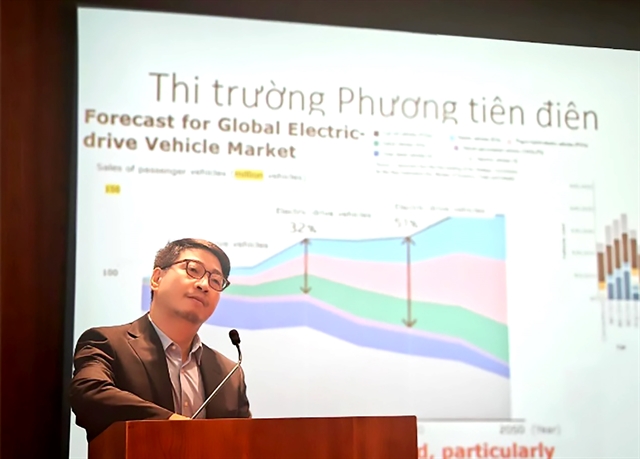 Opinion
Opinion

 |
| Associate Professor Vũ Anh Tuấn, director of the Centre for Transport Research, Việt Nam-Germany University. Photo vov.vn |
A recent workshop heard that between 2,000 - 3,000 people die due to fine dust pollution from traffic activities in HCM City. Associate Professor Vũ Anh Tuấn, director of the Centre for Transport Research, Việt Nam-Germany University, speaks to the Voice of Vietnam (VOV) about possible solutions.
What is your response to the figure of deaths each year related to fine dust pollution in HCM City that Vietnamese and German scientists have just announced?
HCM City has about eight million motorbikes and more than one million cars of all kinds, which not only causes problems with traffic jams and accidents but also has a huge impact on public health.
The research and quantification of the health impact of PM2.5 and PM10 fine dust that was recently concluded in the bilateral cooperation programme between Việt Nam and Germany showed that PM2.5 and PM10 fine dust alone is related to the death and reduced life expectancy of 2,000 - 3,000 people per year, according to the limit set by the World Health Organization (WHO).
If applying this standard and based on epidemiological statistics, hospital data and analysis of death causes related to respiratory diseases, each year there are about 3,000 deaths in HCM City. This number is many times higher than the number of deaths due to road traffic accidents.
This health issue poses an urgent requirement that we must control dust and dirt from motorbikes or cars. Management must also go hand in hand with efforts to reduce greenhouse gases, demonstrating the commitment of the Vietnamese Government.
Action must be taken and what the action is must be properly analysed so we can come up with a suitable roadmap.
In your opinion, where should HCM City start?
Motorbikes contribute a very large proportion to these emissions, notably, the proportion of vehicles over 15 years old account for an extremely high proportion of 20-25 per cent of the pollution.
In my opinion, HCM City needs to implement emission control and inspection for motorbikes and mopeds in the next five years, in accordance with the Road Traffic Safety Law.
Starting next year, emission control and inspection for motorbikes and mopeds will be implemented. The city needs to take the lead in this issue by coordinating with the Việt Nam Register to review standards, regulations and technical guidelines for emission inspection of two-wheeled vehicles.
In the initial stage, Honda or Yamaha maintenance centres can be requisitioned because they have the technical capacity and equipment to measure fine dust and other toxic gases from motorbikes.
For vehicles that meet the requirements, that's fine.
But for vehicles that don't meet the requirements, there must be a technical solution for maintenance. For vehicles that emit too much and still don't meet the requirements after maintenance, they must be discarded.
The city must have a policy to support individuals and businesses to switch to new vehicles such as electric vehicles.
Are there any lessons that HCM City can learn and implement in practice?
We can take India for example. From 2019 to 2021, India had a national policy on reducing greenhouse gas emissions and converting vehicles. By 2022, they found that they had only achieved 4 – 5 per cent of the set target.
When moving to phase two, they learned that the policy must be put into practice and there must be coordination and forums to attract hundreds of businesses, dozens of international organisations, hundreds of universities to participate and come up with initiatives.
For HCM City, the most important thing is to have a vision, commitment and a clear place for businesses and organisations to participate in.
Việt Nam-Germany University is also a science and technology organisation, so it will continue to accompany the city, the Ministry of Transport and related units, such as the Việt Nam Register, in this process. VNS